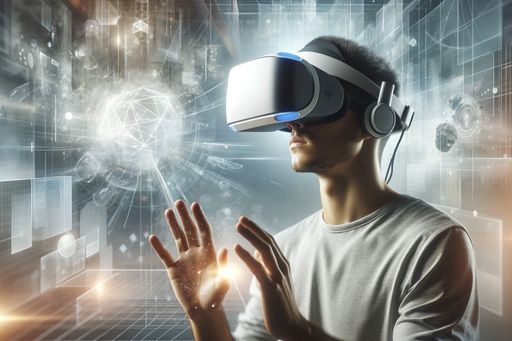Virtual Reality Exposure Therapy: A Promising Treatment for Anxiety in Young People
Find out how virtual reality exposure therapy is showing promise in treating anxiety in young individuals. Discover the results of a recent study and its implications for childhood anxiety disorders.

Study Demonstrates Efficacy of VR Exposure Therapy in Reducing Anxiety Symptoms
Virtual reality exposure therapy has emerged as a potential breakthrough in the treatment of anxiety disorders, especially in young people.
A recent study focused on three children with phobias and examined the effects of VR exposure therapy on their anxiety symptoms. The results were promising, suggesting that this innovative therapy could be an effective and feasible treatment option for childhood anxiety disorders.
During the study, the children were exposed to virtual environments designed to simulate their specific fears. For example, a child with a fear of heights experienced a virtual representation of being at the top of a tall building.
By gradually exposing the children to their fears in a controlled and safe environment, the VR therapy helped them confront and manage their anxiety. The therapy sessions were tailored to the individual needs of each child, allowing for personalized and targeted treatment.
Advantages and Potential of Virtual Reality Exposure Therapy
Virtual reality exposure therapy offers several advantages over traditional methods of anxiety treatment, making it particularly appealing for young individuals.
One major advantage is the ability to create highly realistic and immersive simulations that replicate the anxiety-inducing situations. This level of realism enhances the therapeutic experience and enables individuals to confront their fears in a controlled environment, empowering them to gradually overcome their anxieties.
Moreover, virtual reality therapy provides a safe and supervised setting for exposure, eliminating potential risks associated with real-life exposure. This controlled environment ensures that the therapy can be conducted at the appropriate pace for each individual, maximizing its effectiveness.
Another advantage worth mentioning is the potential for increased engagement and motivation in young people. The interactive nature of virtual reality therapy can make the treatment process more enjoyable and interactive, increasing adherence and participation in therapy sessions.
Implications for Childhood Anxiety Disorders
The findings of the study provide hope for individuals suffering from childhood anxiety disorders and their families.
Traditional treatments for anxiety often involve gradual exposure to feared situations or cognitive-behavioral therapy. While these methods have proven effective, they can be challenging for young people, especially those with severe anxiety.
Virtual reality exposure therapy offers a unique and potentially transformative approach to anxiety treatment. Its ability to create personalized, realistic, and controlled simulations opens up new possibilities for overcoming anxiety in young individuals.
However, further research is needed to validate the efficacy of VR exposure therapy on a larger scale and across different types of anxiety disorders in children. Nonetheless, the initial results are promising and highlight the potential of this innovative treatment method for addressing childhood anxiety disorders.


